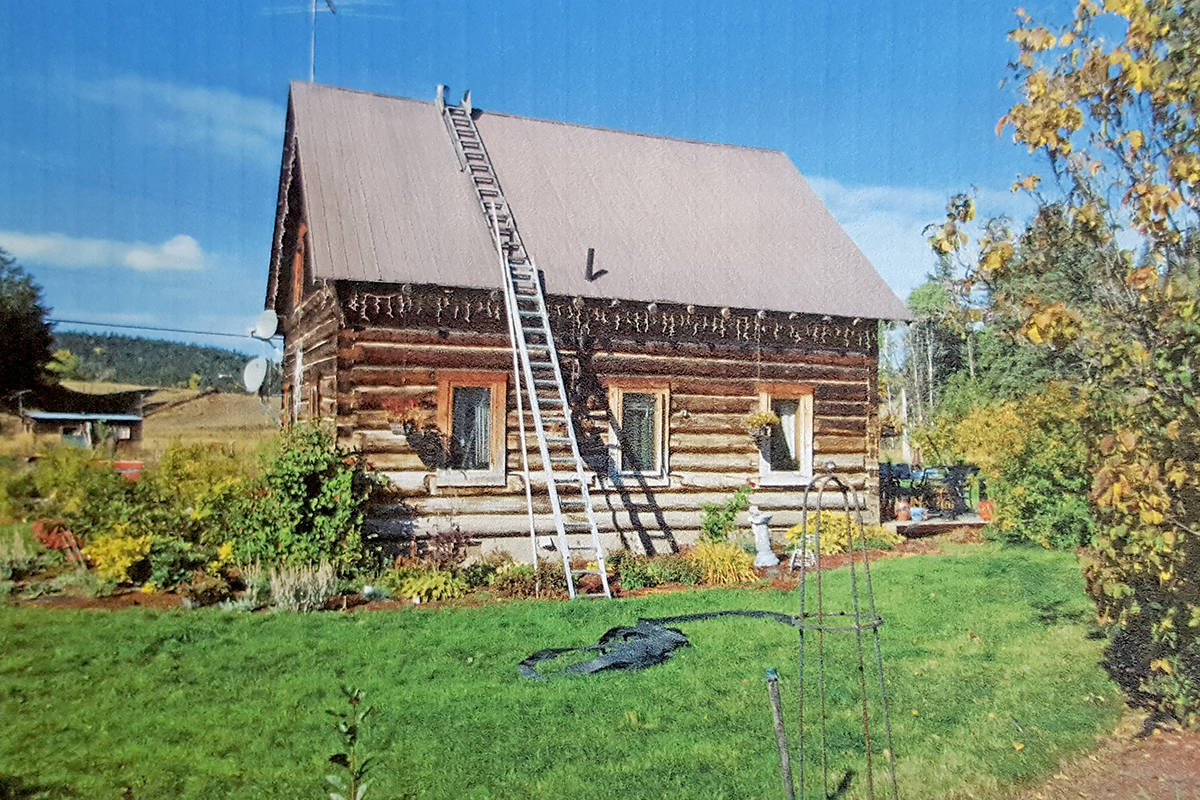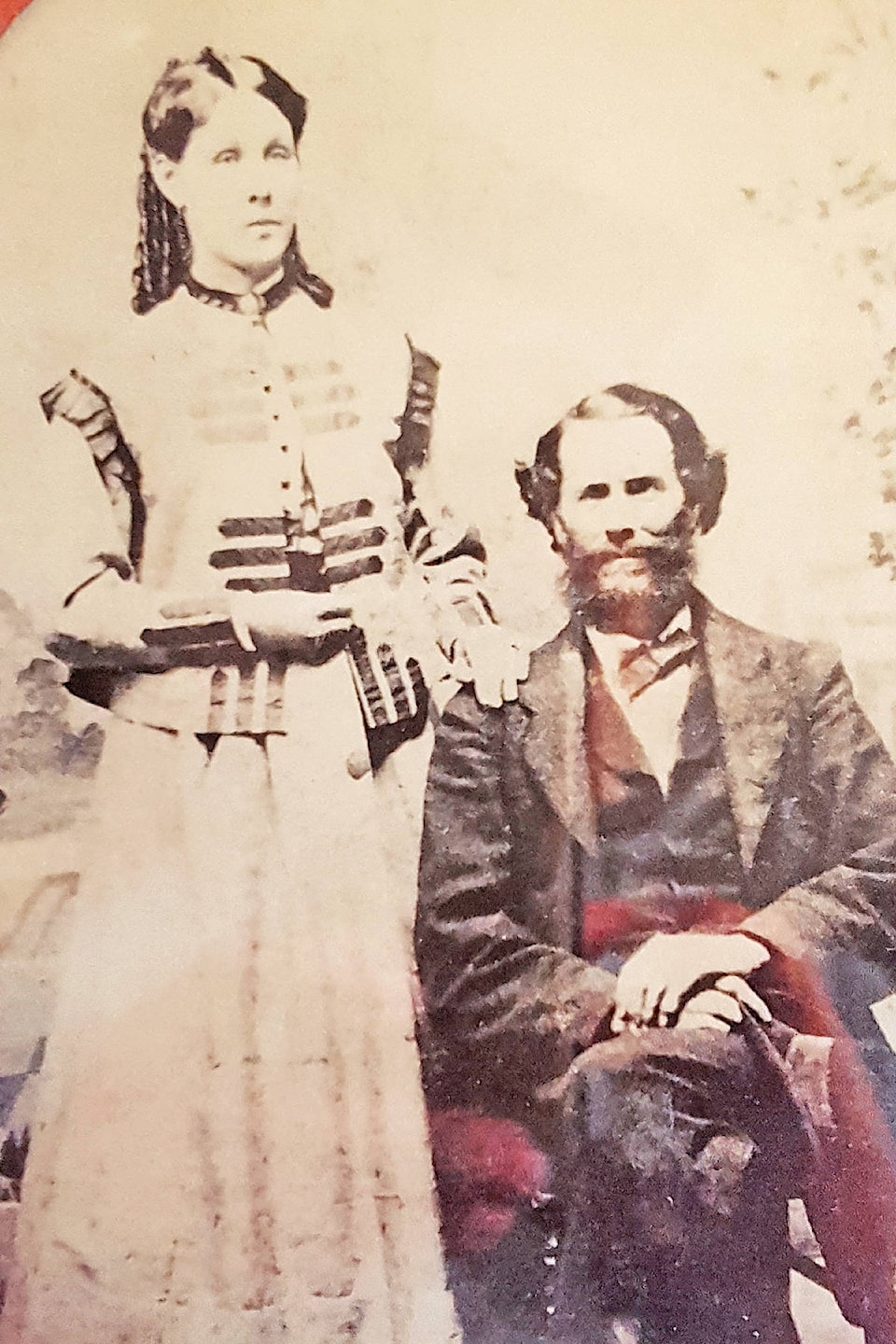Barry Sale
Haphazard History
Thomas Meldrum was the son of Scottish immigrants born in 1827 on the ship bringing his parents to Canada.
They settled in the Barrie, Ont. area, where Thomas grew up and learned his trade as a horse handler and freight driver.
In 1855, he headed west across the country with the homesteaders and adventurers now known as the Overlanders.
By 1861, he had made his way to the Williams Lake area, where he partnered up with William Pinchbeck, the Chief Constable in the region, and with William Lyne, who had been in business with Pinchbeck previously in California.
The three of them formed “Pinchbeck and Company,” which owned and operated the Pinchbeck ranch, roadhouse and saloon.
When the Cariboo Wagon Road bypassed the area in 1863, land values plummeted, and the company began buying up and pre-empting land throughout the whole Williams Lake valley. The land was fertile and rich, and the company supplied grain, beef and vegetables to the Cariboo goldfields.
They also diversified, getting into lumbering, flour milling, whiskey distilling, freighting and outfitting.
Thomas did not enjoy the business side of the operation.
He was happiest working on the ranch with horses and equipment, or driving the teams pulling the freight wagons.
The expansion and success of Pinchbeck and Co. had made him quite wealthy, and had set him up as a prominent community member, but he wasn’t content. The story is told that one day he was freighting supplies out to a ranch on the Fraser River. On a whim, he climbed Dessous Mountain and looked across the river at the wilderness to the west, where no white settlers had ventured. He made the decision then and there that he wanted to strike out on his own and find a place to homestead across the river.
Over the next few months, he explored the area on the west side of the Fraser, eventually finding a beautiful valley with natural meadows and a good source of water. For him, this place was, and always would be, home.
So, in 1866, Thomas sold his share of the company back to William Pinchbeck, making a tidy profit in the process.
He moved across the river and applied to pre-empt a section (640 acres) of land. On Aug. 1, 1867, a Crown grant was issued by Victoria for this land, thus, officially making Thomas Meldrum the first white person to settle permanently in the Chilcotin area of B.C.
On this land Thomas set about establishing and developing an enduring family homestead.
It was not long before the small, meandering stream on the place became known as Meldrum Creek and, as the original homestead grew into a viable ranching operation, the ranch took on the same name — Meldrum Creek Ranch.
In 1868 or 1869, Thomas married a Shuswap woman, Ahiel (Betty) Kevah. Her origins have been lost to history, but she was most likely a member of the Williams Lake Band.
Thomas and Betty had eight children in total, four boys and four girls.
Thomas worked hard on the ranch, gradually adding to it. He went into a brief partnership with Fred Becher, owner of the huge Becher stopping house, hotel and saloon at Riske Creek, but he preferred to be on his own.
He grubstacked Chinese placer miners when the river was too high to work their gold claims, hiring them to pick rocks, build wagon trails, clear land and dig irrigation ditches, the remains of which can still be seen today.
He became an icon in the area, well-known and respected by all.
Thomas died in 1889 of dropsey, now called pulmonary edema, and he is buried in the family grave site overlooking the original homestead.
After Thomas’s death, the ranch was divided up among the four sons, with the main piece going to Thomas Jr., born in 1872. Like his father, he, too, loved the ranching life, and he was good at it.
He married Emmaline Long Johnny, from the Anahim Reserve at Alexis Creek, and together they had six children: Albert, Arthur, John, Irvine, Ellen and Irene.
The oldest son, Albert, was a big man who took up boxing.
In 1929, on two separate occasions, he fought Max Bae, the heavyweight champion of the world. Both fights were stopped in the early rounds, but Albert, who fought under the name Chief Cariboo, always swore that the fights were stopped to make Bae look good, and that he was never really hurt.
After his boxing career ended, Albert turned to logging, then to long shoring on the Vancouver docks.
The second son, Arthur, also had ranching in his blood. Except for a period of service in the Second World War, during which time he was assigned overseas as a mechanic in the army, he remained at Meldrum Creek all his life. After the war, at age 29, he met Betty La Croix, a 19-year-old cook and cleaner at a local logging camp.
They became life partners, and took over the operation of the main ranch.
They had two children, Willie in 1954, and Bev in 1957.
A third son, John, became a sergeant in the Canadian Army during the Second World War.
He served overseas in Germany and in Holland, where he met a young woman named Ida De Jonge. They were married in 1946 and returned to Canada, where John took up logging.
Thomas Jr. died at Williams Lake in 1955, while Emmaline lived on until 1971.
In the 1930s, the Meldrum Creek area began to experience a population surge of sorts. New homesteaders moved in to buy up or pre-empt land.
Logging operations and sawmills opened up, and a log schoolhouse was built to accommodate the influx of children.
By the early 1940s the original log ranch house with its sod roof was far too small for the Meldrum family so, during 1940 and 1941, a big, new log house was constructed. That structure remains the main ranch house to this day.
After the war, the boom continued, and by the mid 1950s Meldrum Creek was a thriving little community of more than 100 inhabitants.
There were three sawmills, a store (operated out of the ranch house by Betty), a post office, and a new school complex consisting of a double wide classroom trailer with a separate single wide as a teacherage.
The ranch house also became a boarding house of sorts for single loggers.
It was a close knit, friendly community. There were dances and box socials at the old schoolhouse, which would be emptied of desks for the occasion.
Locals Gordon (accordion) and Charlie (fiddle) Woods would provide music until the early hours of the morning. Halloween was always a big occasion, with a huge bonfire, treats, fireworks and toasted marshmallows.
People all knew each other and helped each other, much like a large family.
By the mid 1960s the community began a long, slow decline.
The school closed in 1966, since it was cheaper to bus students into town. One by one, the sawmills closed, as did the mill camps.
As children grew up, they moved away to pursue careers closer to the larger centres in the province.
Today, Meldrum Creek is just a ghost of what it once was.
There are still about a dozen widely dispersed homesteads in the area, with the occupants pursuing modest farming and ranching operations.
Willie Meldrum and his wife, Becky, still own 240 acres or so.
Their sons are now involved with the ranch, and they are the fifth generation of Meldrums to work this land. It’s a family with over 150 years of continuous history in the area, and one with many great stories to tell.
My thanks to the Meldrum family, especially Betty and Becky for their help in writing this article.

